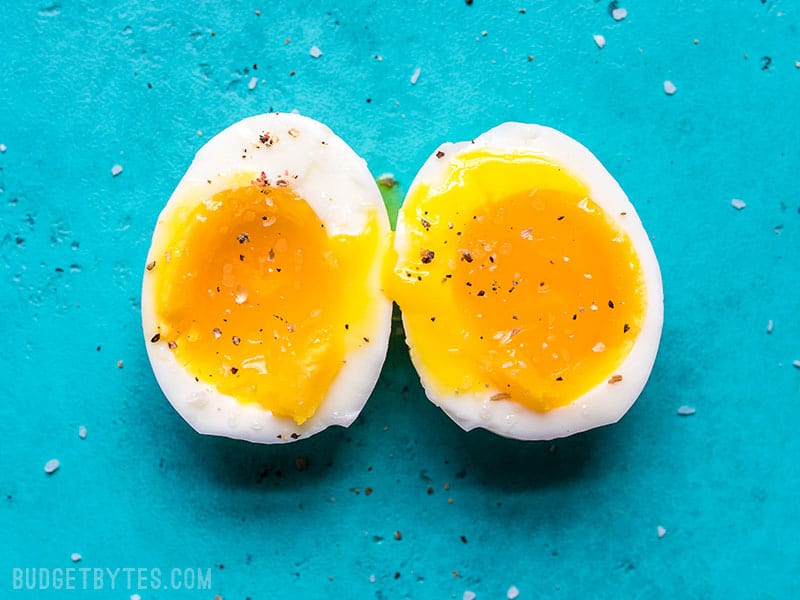Silky and delicate with surprisingly deep flavors, Chinese Steamed Eggs are as easy to make as they are versatile. Ready in fifteen minutes and made with just three ingredients (eggs, salt, water) this custard-like dish can be topped with whatever your heart desires. I like using soy sauce, scallions, and chili oil. You can make them a heftier meal by topping them with a flavorful protein like garlicky shrimp or crispy pork. Growing up, my grandmother (or in Cantonese, my por por) would prepare this Chinese Steamed Eggs recipe and I’m excited to share it with you.
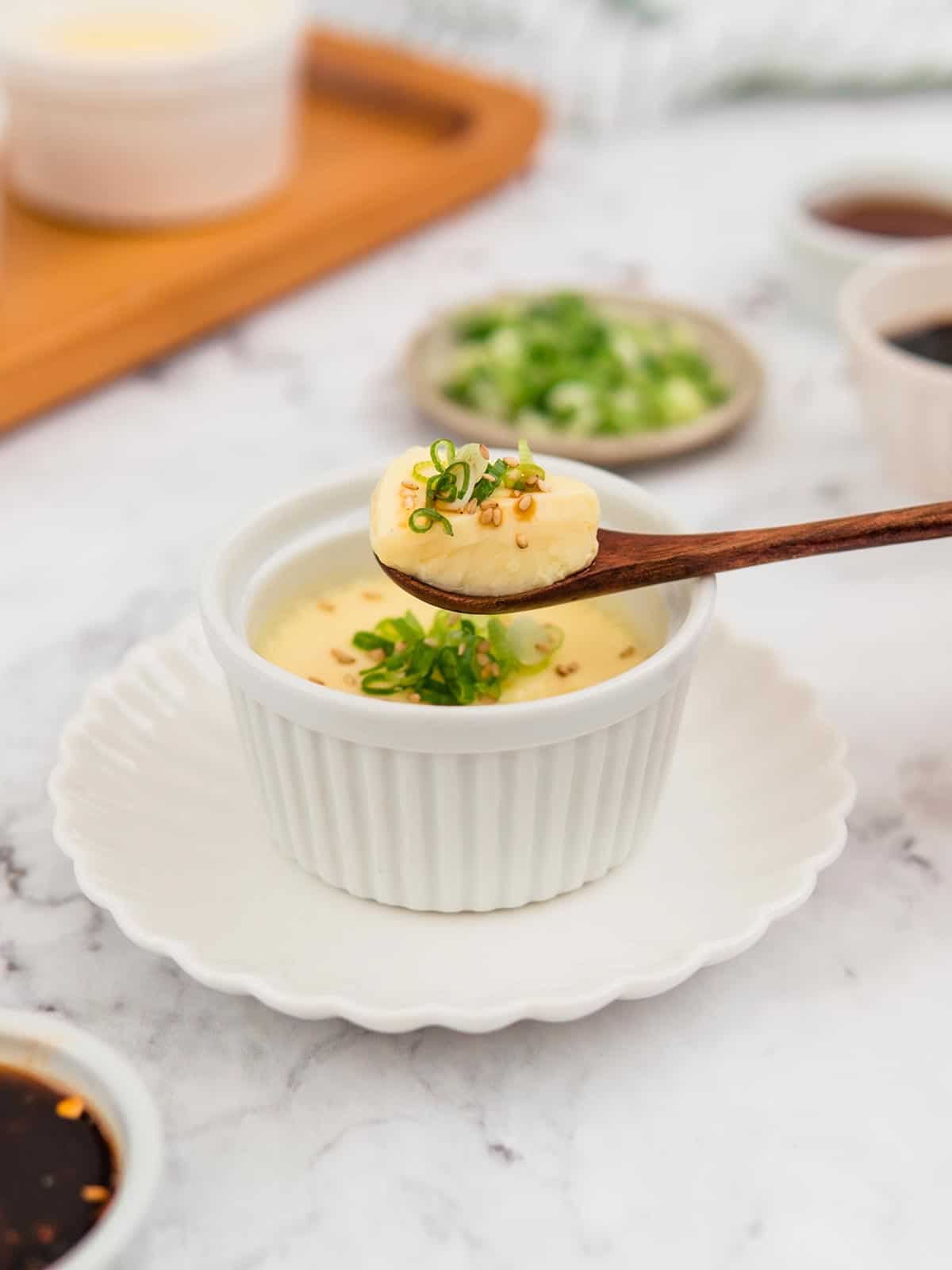
What Are Chinese Steamed Eggs?
Chinese Steamed Eggs are a popular and beloved dish in Chinese cuisine. The eggs are beaten with salt and water and then steamed until they become a silky smooth custard. The delicate texture of the eggs is a perfect canvas for toppings that create the flavor combination of your choice.
Ingredients For Steamed Eggs
Chinese steamed eggs are commonly cooked in many Chinese households as a staple breakfast item. The dish is considered a comfort food that reminds many of their childhood and culinary traditions. Here’s what you’ll need to make Chinese Steamed Eggs:
- Eggs– are the foundation of this dish.
- Salt– helps to flavor the eggs and creates a silky texture by stopping the proteins in the egg yolks from binding too tightly.
- Warm Water– is used to help create a custard-like consistency.
- Toppings – are up to you, but some of my favorites are soy sauce, chili crunch, green onions, and a sprinkle of sesame.
Tips For Making Chinese Steamed Eggs
- Use fresh eggs for the best results.
- Gently beat the eggs to avoid incorporating too much air, which can lead to air bubbles and a spongy texture.
- Strain the egg mixture through a fine-mesh sieve to remove excess air bubbles or eggshell fragments. This step ensures a silky smooth texture.
- Cover your dish with plastic wrap or foil while steaming to prevent condensation from dropping onto the eggs and causing water spots.
- Start with steaming the eggs for 10 minutes for a soft custard texture that ripples in the center like jello. Increase the time if you prefer a firmer consistency.
How Do I Make A Large Batch Of Chinese Steamed Eggs?
To make a larger batch just make sure that the ratio stays the same: for every egg use 1/2 cup water and 1/8th teaspoon salt. You can steam the eggs in multiple rounds. You can also steam the egg mixture in a larger ramekin or bowl but it may need an additional 2-5 minutes. The eggs are cooked when the custard gently ripples in the center like jello.

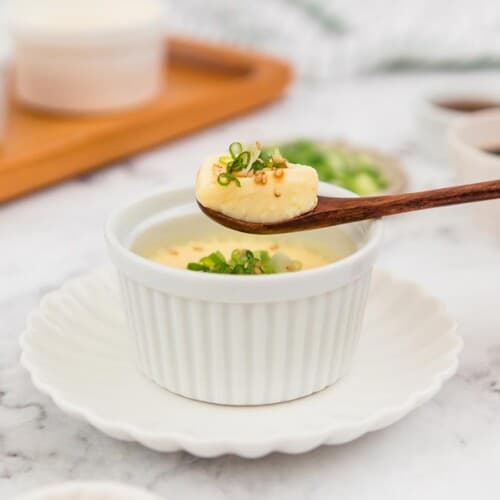
Chinese Steamed Eggs
Equipment
Ingredients
- 2 large eggs $0.70
- 1/4 tsp salt $0.01
- 1 cup warm water $0.00
Instructions
- In a medium bowl, gently whisk the eggs with the eggs with the salt until small bubbles start to form on the surface, about 1 minute.
- Add the warm water to the egg mixture and carefully whisk until thoroughly combined.
- Carefully pour the egg mixture through a fine-mesh sieve and into 2 small ramekins or bowls. Cover with plastic wrap or foil and gently pierce with a knife to create a steam vent.
- Place a steamer rack in a pot and fill the pot with water until it reaches just below the rack. Cover and bring to a boil over high heat. Then gently place the ramekins on the rack and lower the heat to medium-low. Cover and steam for 10 minutes.
- Carefully remove the ramekins from the steamer and garnish with desired toppings.* Serve immediately. Enjoy the silkiest eggs you've ever had!
See how we calculate recipe costs here.
Notes
Nutrition

How to Make Chinese Steamed Eggs – Step by Step Photos
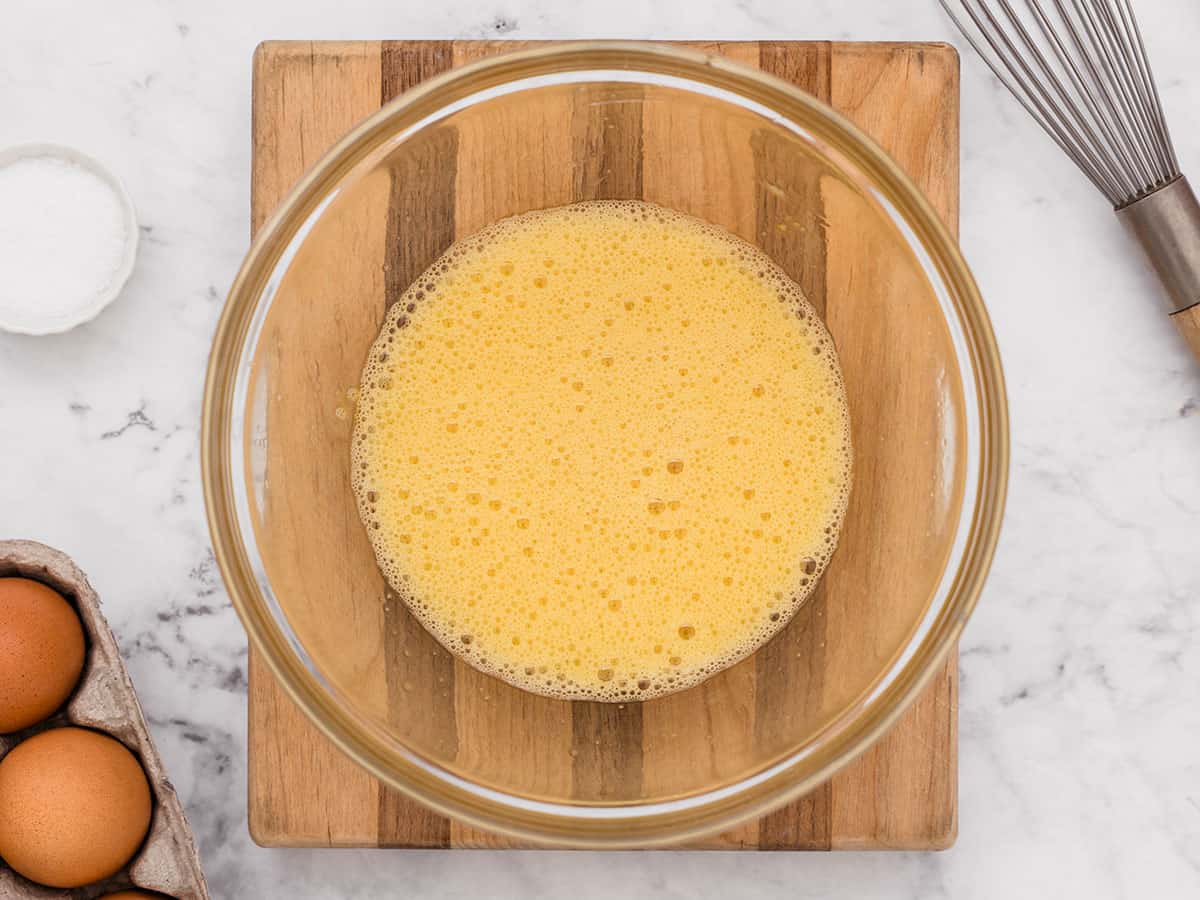
In a medium bowl, gently whisk the 2 eggs with the 1/4 teaspoon salt until small bubbles start to form on the surface, about 1 minute.
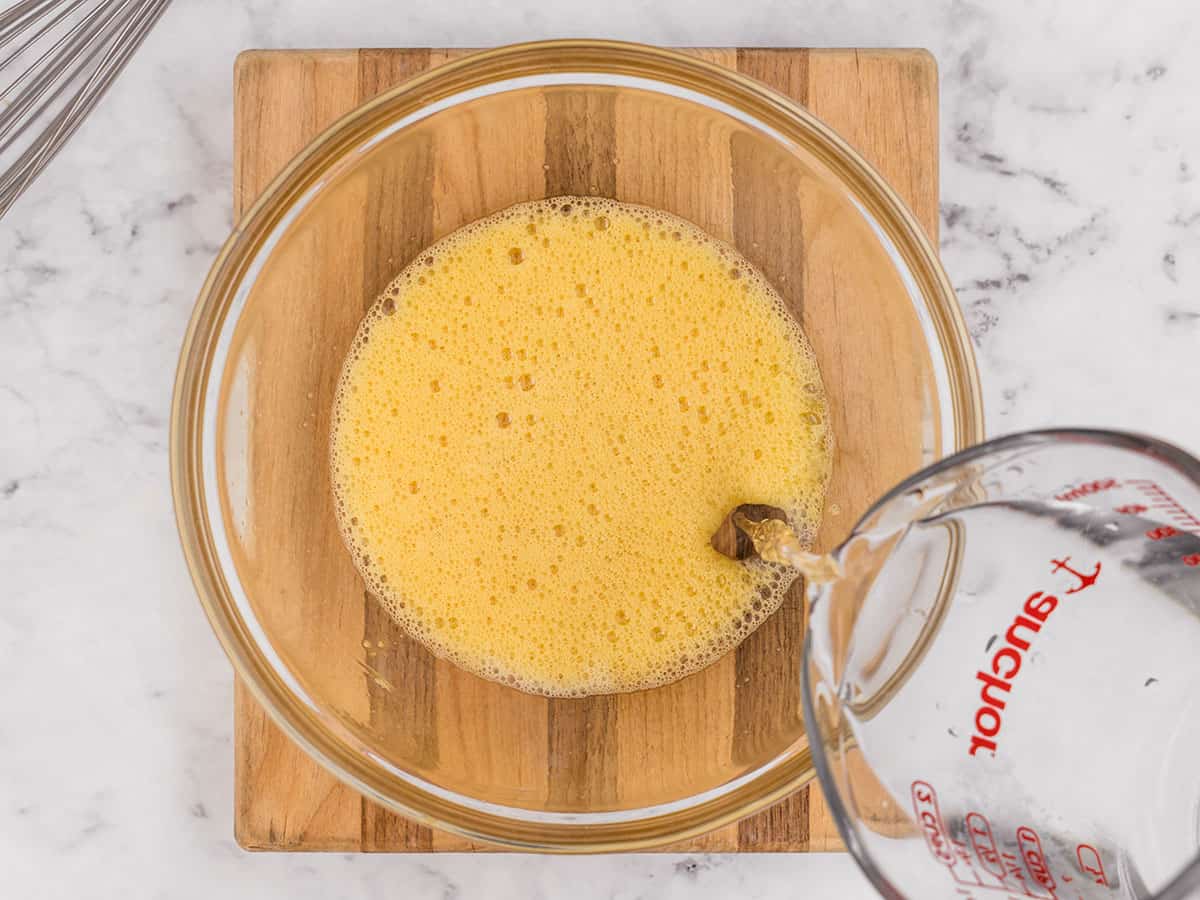
Add the cup of warm water to the egg mixture and carefully whisk until thoroughly combined. The water should be warm to the touch. To achieve this, heat 1 cup of water until just boiling and remove from the heat. Add 1 cup of tap water and stir.
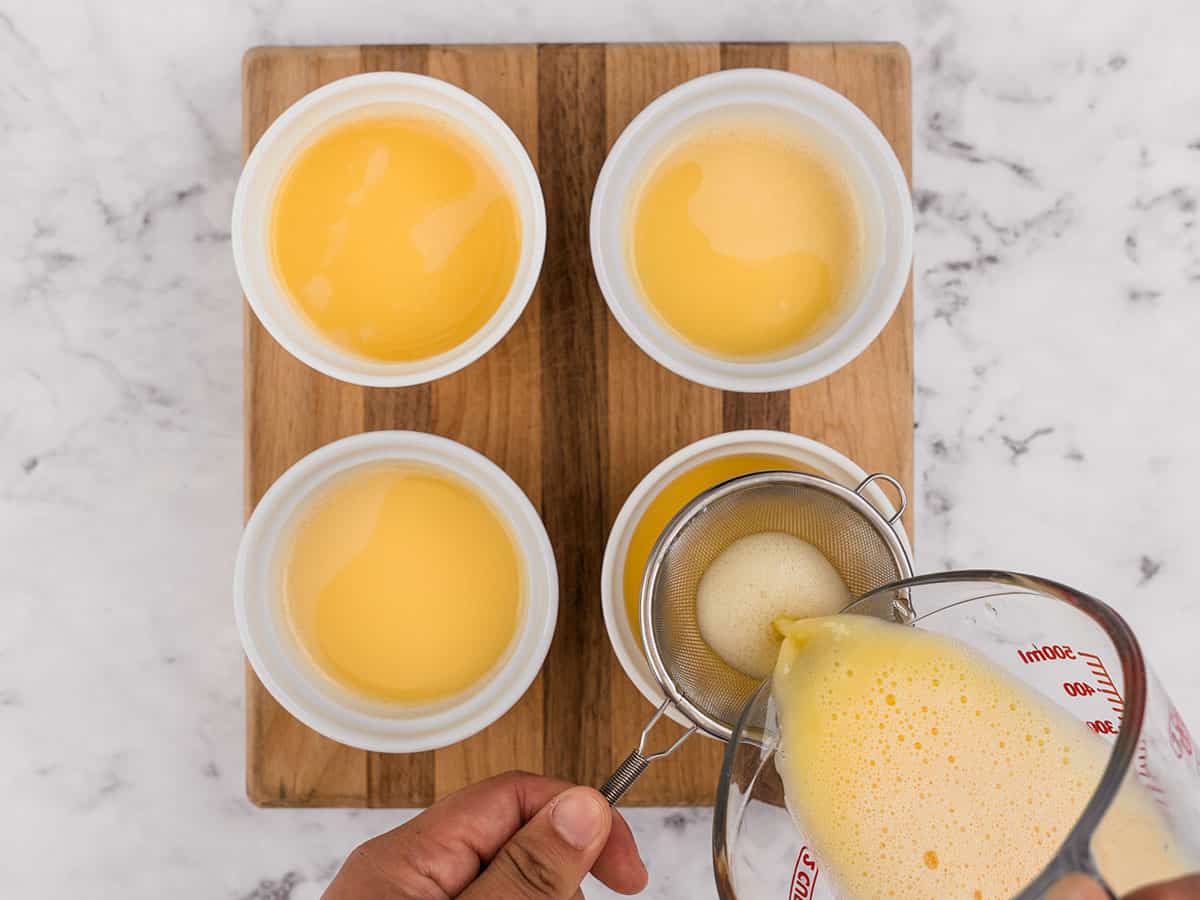
Carefully pour the egg mixture through a fine-mesh sieve into two small ramekins. Cover with plastic wrap or foil and gently pierce with a knife to create a steam vent.
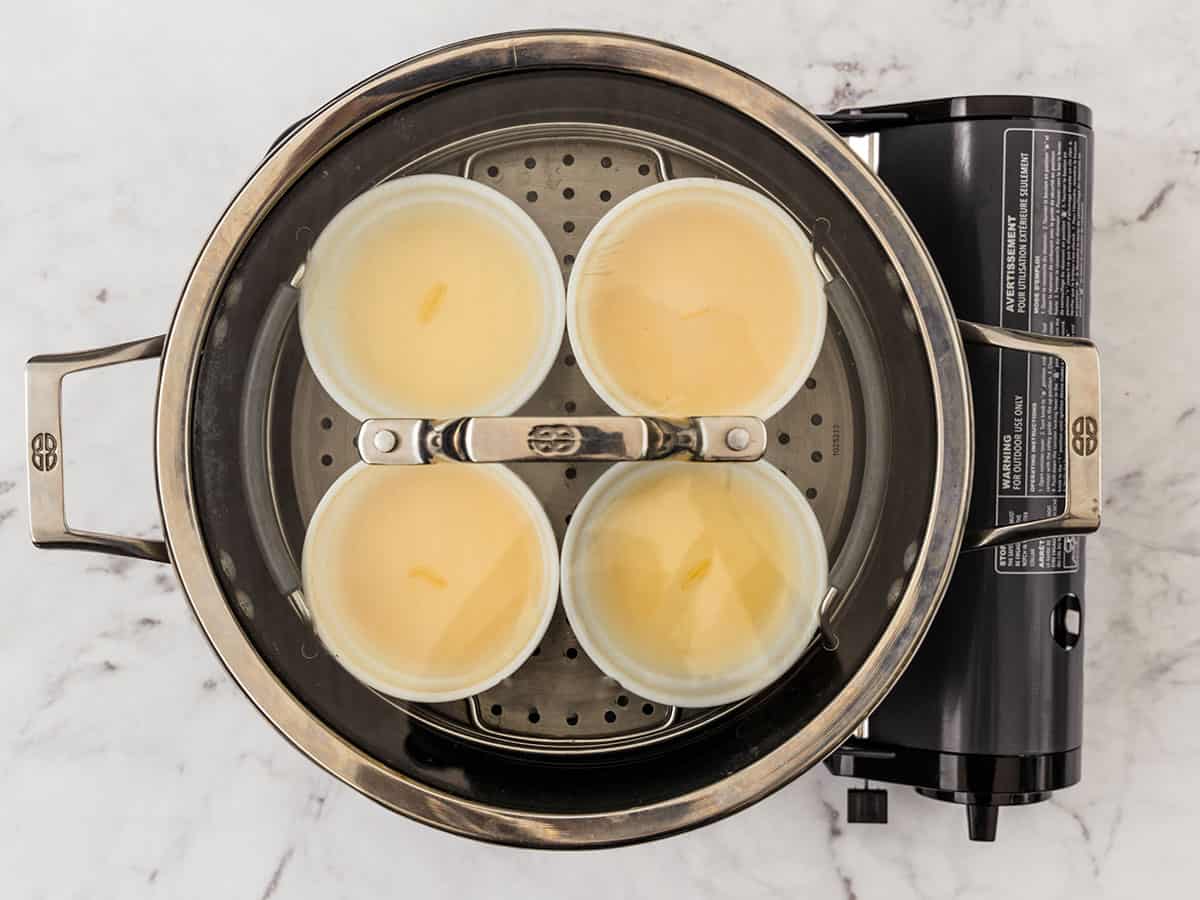
Add a steamer rack to a pot large enough to hold both ramekins. Fill the pot with water until it sits just below the rack. Cover the pot and bring the water to a boil over high heat. Then, gently place the covered ramekins on the rack and lower the heat to medium-low. Cover the pot and steam for ten minutes.

Carefully remove the ramekins from the steamer and garnish with desired toppings, like scallions, soy sauce, sesame oil, chili oil, or sesame seeds. Serve immediately and enjoy the silkiest eggs you’ve ever had!
More Easy Egg Recipes
The post Chinese Steamed Eggs appeared first on Budget Bytes.



